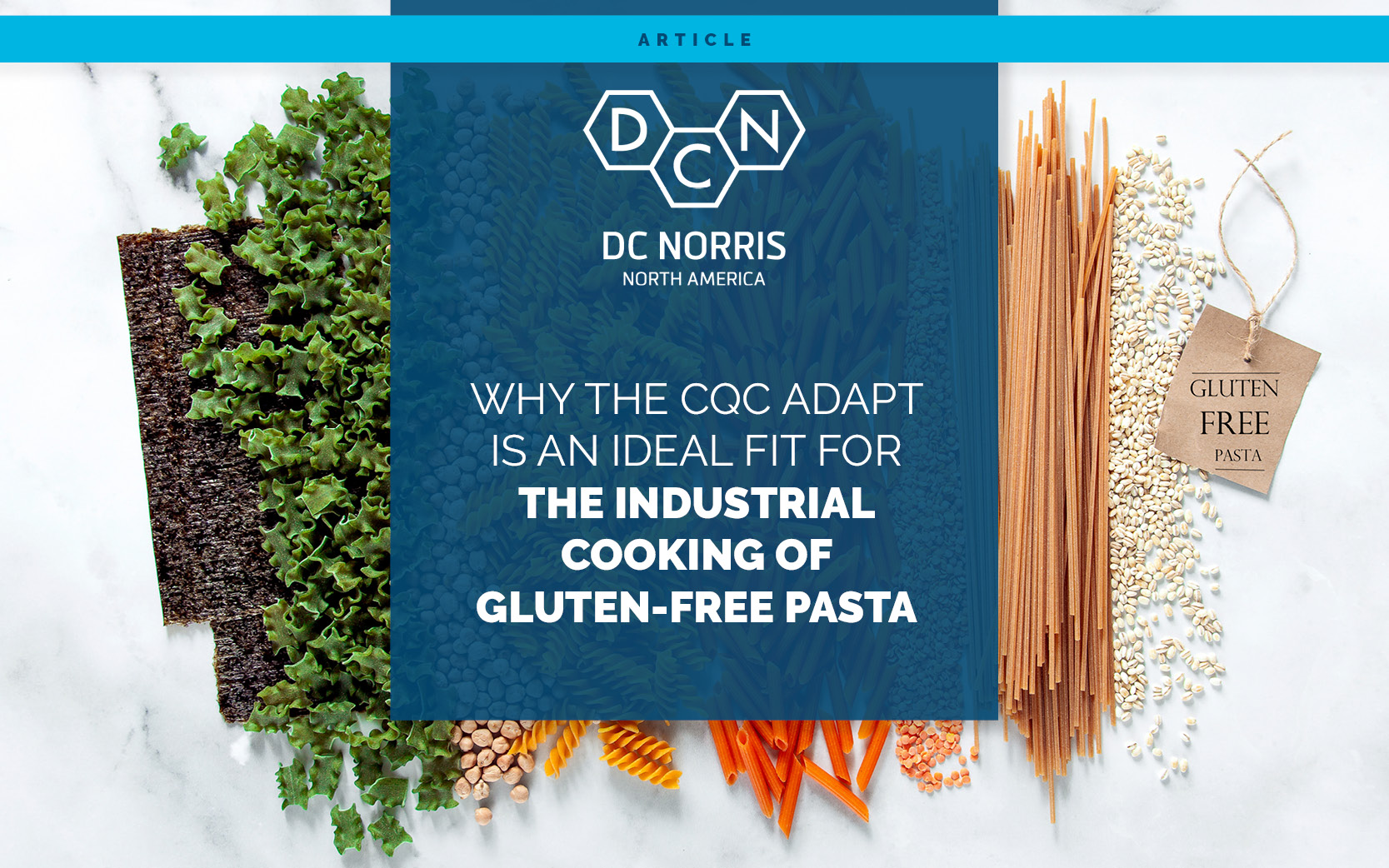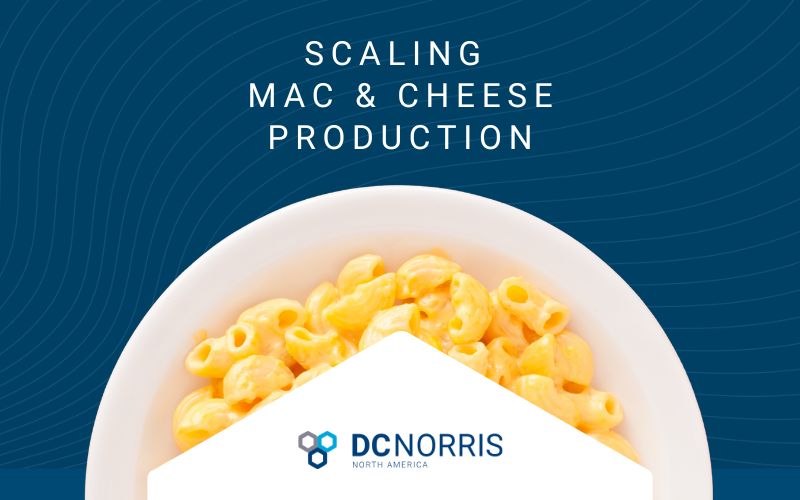Why the CQC Adapt is an Ideal fit for the Industrial Cooking of Gluten-Free Pasta
Gluten-free pasta presents cooking challenges to at-home cooks. Those challenges are exponentially compounded when attempting to cook gluten-free pasta at an industrial scale for ready meals and frozen entrees. The CQC Adapt has many innovative features that help overcome these challenges to produce perfectly cooked gluten-free pasta without clumping, breakage, or undesirable textures.
What Ingredients Are Gluten-Free Pasta Made With?
Gluten-free pastas are typically made from alternative grains like corn, millet, buckwheat, rice, quinoa, and amaranth. Recently, grain-free pastas have hit the mainstream. Grain-free pastas, which are also gluten-free, are made largely from pulses (lentils, beans, peas, and chickpeas), soy, nuts, potatoes, and even fruit (coconut).
Regardless of the ingredients, all packaged gluten-free pastas are made from a combination of gluten or grain-free flours and binding agents like egg and water.
What Are the Most Common Challenges When Cooking Gluten-Free Pasta at an Industrial Scale?
Resource Efficiency
Gluten-free pasta tends to be starchier than wheat pasta because it is made with flour (or a combination of flours) that has a different density than flour that contains gluten. This starchiness creates a tendency for clumping when cooking gluten-free kinds of pasta. Preventing clumping when cooking gluten-free pasta requires a large cooking kettle with ample water (the more water used for cooking, the less starchy and sticky the pasta will become) and room in the kettle for the pasta to be moved around continuously. It is recommended that 1.5 gallons of water are used for every pound of pasta. In addition to a higher than average water to pasta ratio, the kettle can’t typically be filled more than ⅔ full to accommodate for the foam that is typically generated at the top of the water level due to the high starch content.
Gluten-Free Pasta Does Not Tolerate Overcooking
Gluten and grain-free pasta moves from al dente to overcooked remarkably fast. Therefore, industrial producers must be able to halt the cooking process quickly when the desired texture is reached to preserve doneness and shape.
Cooked Gluten-Free Pasta Doesn’t Rethermalize Well
To prepare gluten-free pasta for later rethermalization, the pasta must be slightly undercooked and then promptly cooled. This creates a more brittle product, prone to breakage during the dewatering process.
What Features of the CQC Adapt Produce Al Dente Gluten Free Pasta Dishes?
The Cook Quench Chill Adapt (CQC Adapt) system is a modular system for cooking, quenching and chilling of pasta, rice, potatoes and vegetables. The cook quench chill process arranges a series of vessels in-line. The product is contained in baskets that tip into each other, and ultimately into a suitable receptacle at the end of the line of vessels. The versatility of the CQC Adapt means that modules can be added or removed according to throughput.

Starch Removal System
All three tanks in the CQC Adapt (cook, quench, chill) have a separate weir to allow the starch to be run off during each change meaning less frequent water changes. This is particularly useful for the cooking of gluten and grain-free pastas that require a high water to pasta ratio for cooking to prevent stickiness and that generate a high volume of starchy foam that needs to be removed from the water to prevent clumping.
Jet Cook™ Heating
The CQC Adapt system utilizes Jet Cook™ for water heating to speed up both processing and cleaning. Jet Cook™ operates by collapsing steam into the product at high velocity through a specially designed nozzle. As the steam collapses it pulls the product (liquid) through, creating a recirculating effect (partial vacuum) in the re-circulating pipe. 99.5% of the steam is utilized and then collapsed into the product ensuring huge energy savings. In addition to the energy savings that Jet Cook™ creates, the recirculating effect aids in resisting stickiness and clumping.
Variable Wave Agitation System
The CQC Adapt system utilizes a variable wave agitation system that pumps hot water from the cook tank through to the wave nozzles positioned at the rear of the cook basket which produces a damage-free product and prevents product clumping. The speed of agitation can be controlled through the recipe manager package.
Smaller Tank Sizes Speed Cooling
Ending the cooking process quickly is especially important for gluten and grain-free pastas. The quench and chill tanks of the CQC Adapt have hygienic heat exchangers which give the ability to program the tank temperatures down to 33°F. The modular design of the CQC Adapt system reduces cooling times with smaller tanks sizes. The final phase, or chill vessel, features continuous water chilling and re-cycling.
Get a Quote for the CQC Adapt
Whether you’re cooking gluten and grain-free pastas at scale for a self-serve food bar or are preparing frozen meals (or something in between), DC Norris North America can help you navigate your industrial food processing equipment choices. Speak with a member of our team to learn more about the CQC Adapt today.
Outside of North America but looking for more information on the CQC Adapt? Contact our global headquarters.



